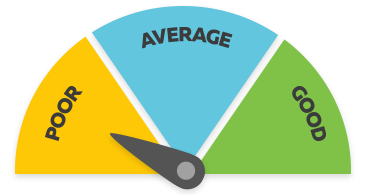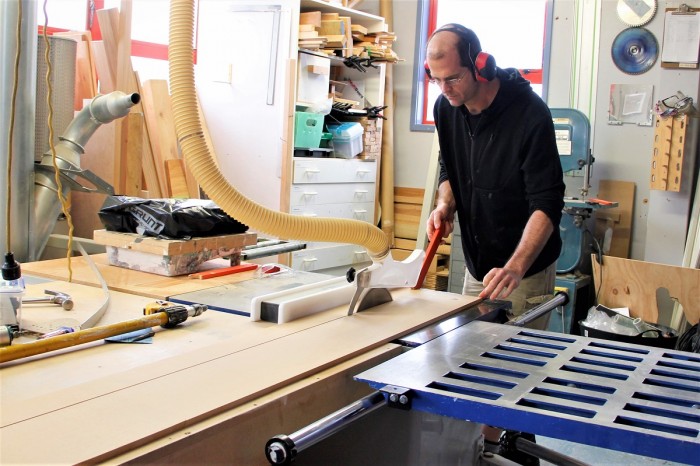Exhibition and Collections Technician
Kaihangarau Whakaaturanga/Kohinga
Alternative titles for this job
Exhibition and collections technicians prepare, install, maintain and dismantle museum and art gallery exhibitions.
Pay
Full-time exhibition and collections technicians usually earn
$49K-$55K per year
Source: Museums Aotearoa, 2018.
Job opportunities
Pay
Pay for exhibition and collections technicians varies depending on experience, the size of the organisation they work for, and how many hours a week they work.
- Experienced, full-time exhibition and collections technicians may earn $49,000 to $55,000 a year.
A third of exhibition and collections technicians are self-employed and their income depends on the success of their business.
Source: Museums Aotearoa, 2018.
- PAYE.net.nz website - use this calculator to convert pay and salary
-
Employment New Zealand website - information about minimum wage rates
(This information is a guide only. Find out more about the sources of our pay information)
What you will do
Exhibition and collections technicians may do some or all of the following:
- provide a budget for the cost of installing an exhibition
- design and build models, furnishings and fittings for exhibitions
- safely unpack items, arrange them for exhibit, and set up sound and visual effects
- arrange for contractors, such as painters, to install parts of an exhibition
- monitor and maintain exhibitions while they are on public display
- safely dismantle exhibition furniture and props and pack for storage or shipping
- support artists and/or curators during installation, display and dismantling of exhibition.
Skills and knowledge
Exhibition and collections technicians need to have:
- skill in reading and interpreting designers' plans
- knowledge of a wide range of building materials and methods
- practical and technical skills such as carpentry, metalwork and painting
- knowledge of occupational health and safety requirements for safe building practices and correct lifting techniques
- knowledge of how to correctly pack and unpack artworks and other fragile items.
Exhibition and collections technicians may also need to know about lighting techniques, graphics and 3D design, conservation practices, and fine arts.
Working conditions
Exhibition and collections technicians:
- usually work regular business hours when preparing for exhibitions, but may work longer hours when setting up and dismantling exhibitions
- work in workshops, galleries, museums and theatres, on film sets, and at art and design schools
- work in conditions that can be dusty or dirty, and may come into contact with toxic or flammable materials such as cleaning fluids, enamel and spray paints
- may travel locally to source materials for exhibitions, or to different museums or galleries in New Zealand.
What's the job really like?

Nick Taylor
Exhibition Technician
What's your role in the art gallery?
"My job is to deliver the exhibition on time, safely and affordably.
"We liaise with the artists and the curator about technical aspects. For instance if it’s a sculpture, how does it need to be fixed down so we don’t damage the art and people won’t get hurt if there is an earthquake?"
What's the main challenge of being an exhibition technician?
"We can have challenges with the technical side, so we’re always trying to upskill.
"Recently we had two videos that had to be synced with dual-channel stereo. We were there until 10pm a few nights trying ways to get it to work. The projectors were 15 metres high so we had to keep driving the scissor lift all the way up to the ceiling to check them.
"In the end it was beautiful. It’s satisfying when you make it all work."
What do you like about this job?
"I was a joiner before this. A friend helped me get a casual job as an exhibition technician and as soon as I started I knew I wanted to work in art galleries – because of the people you get to work with. I like everybody I work with."
Entry requirements
There are no specific requirements to become an exhibition and collections technician. However, most roles require building or construction experience.
It is also useful to have qualifications or skills in:
- industrial design
- museum studies
- modelmaking
- fine art or technical drawing
- project management
- metalwork
- furniture building
- joinery and carpentry.
Secondary education
A tertiary entrance qualification is required to enter further training. Useful subjects include painting, sculpture, photography, printmaking combined, technology, maths, and design and visual communication.
Personal requirements
Exhibition and collections technicians need to be:
- both practical and creative
- good at problem solving
- accurate, with an eye for detail
- organised and able to work to deadlines
- calm, patient and adaptable
- able to work well in a team and with a diverse range of people
- able to prepare and work to budgets.
It's good to be able to stay calm. A lot of things will happen – you can't get too stressed out.

Nick Taylor
Exhibition Technician
Useful experience
Useful experience for exhibition and collections technicians includes:
- art and design
- woodwork
- metalwork
- handcraft work
- work in galleries, museums or theatres.
Physical requirements
Exhibition and collections technicians need to have a good level of fitness and must be strong, as they may lift large objects and spend long periods on their feet.
Check out related coursesWhat are the chances of getting a job?
Small occupation size means opportunities scarce
Chances of getting a job as an exhibition and collections technician are poor because it's a small occupation and few full-time jobs are available.
Many exhibition and collections technicians work on short-term contracts, sometimes for a number of galleries or museums. People on contracts may struggle to find regular work and may only be able to work part time as exhibition technicians.
Opportunities for people starting out as exhibition and collections technicians are particularly hard to come by as the work tends to stay in the hands of established, experienced workers.
According to the Census, 189 exhibition and collections technicians worked in New Zealand in 2018.
Networking and being adaptable key to finding roles
A good way of gaining experience is to work as an assistant to an established exhibition and collections technician, or work as casual labour on a project.
Industrial design in higher demand
Museums and film production companies need exhibition and collections technicians who can create props and models for displays and film sets. Exhibition and collections technicians who have industrial design degrees and model-making expertise are in demand to do this work.
Types of employers varied
Most exhibition and collections technicians work for:
- museums
- art galleries
- exhibition design and construction companies
- art and design schools.
They may also work for theatres or film production companies.
Some exhibition and collections technicians are self-employed and work as contractors to museums or galleries.
Sources
- Ministry of Business, Innovation and Employment, '2006-2014 Occupation Data' (prepared for Careers New Zealand), 2015.
- Stats NZ, '2018 Census Data', 2019.
- Tocker, P, executive director, Museums Aotearoa, www.careers.govt.nz interview, July 2018.
(This information is a guide only. Find out more about the sources of our job opportunities information)
Progression and specialisations
Exhibition and collections technicians may progress to work:
- as exhibition preparators at larger museums
- as exhibition programme managers at smaller museums or galleries
- for exhibition design and construction companies.
They may also set up their own business.
With project management skills and seven or more years' experience, exhibition and collections technicians may move into project manager roles.
Last updated 28 March 2025


